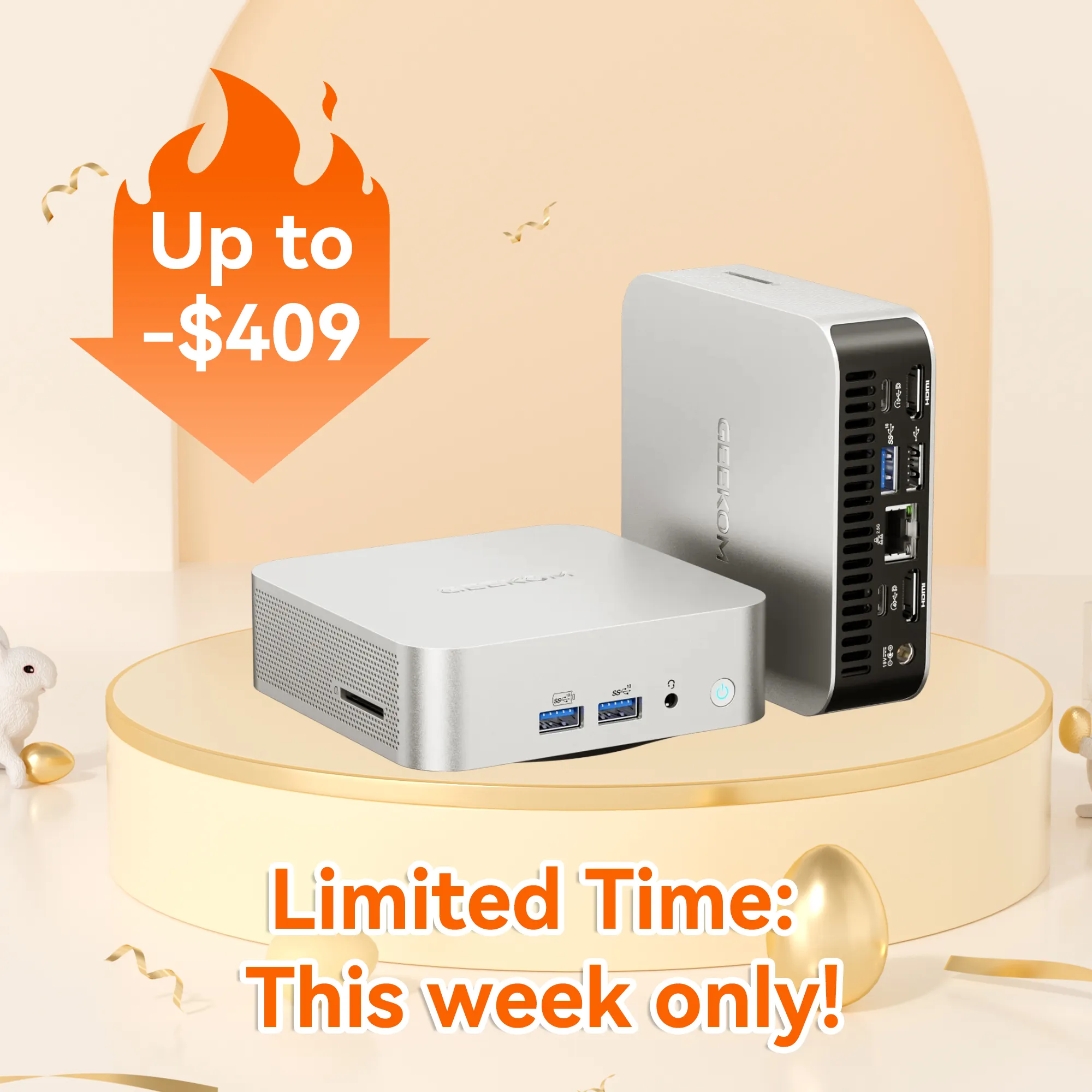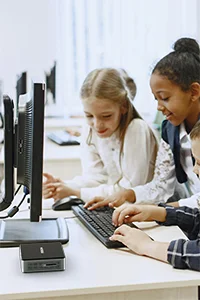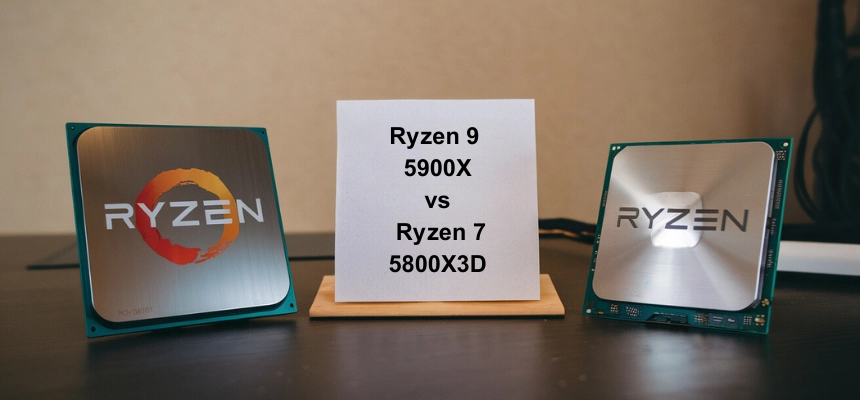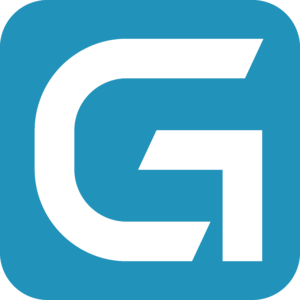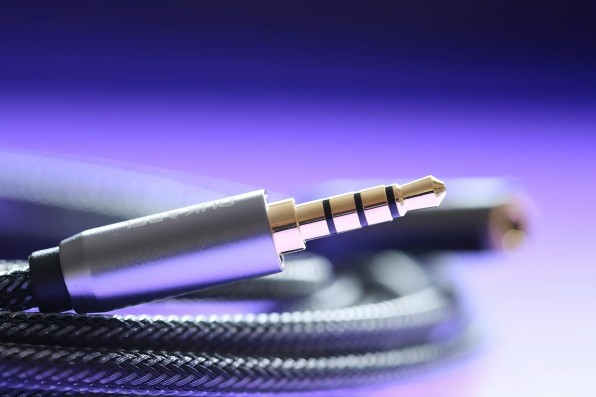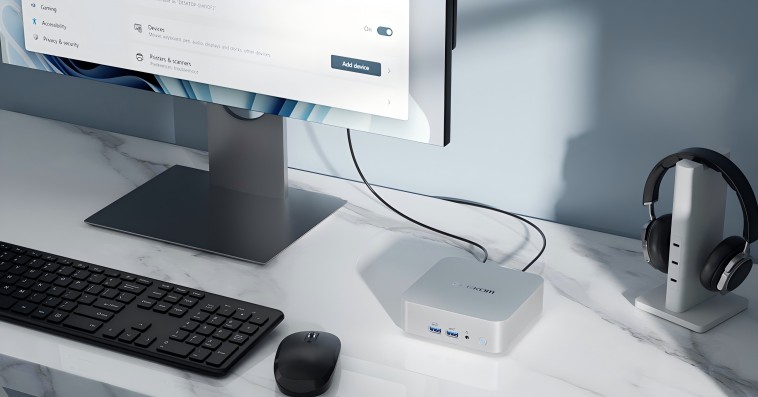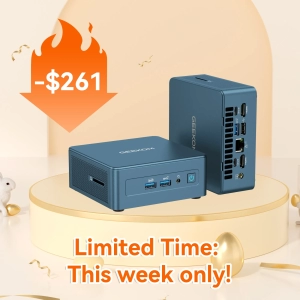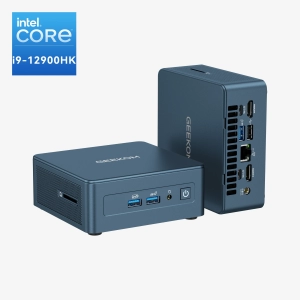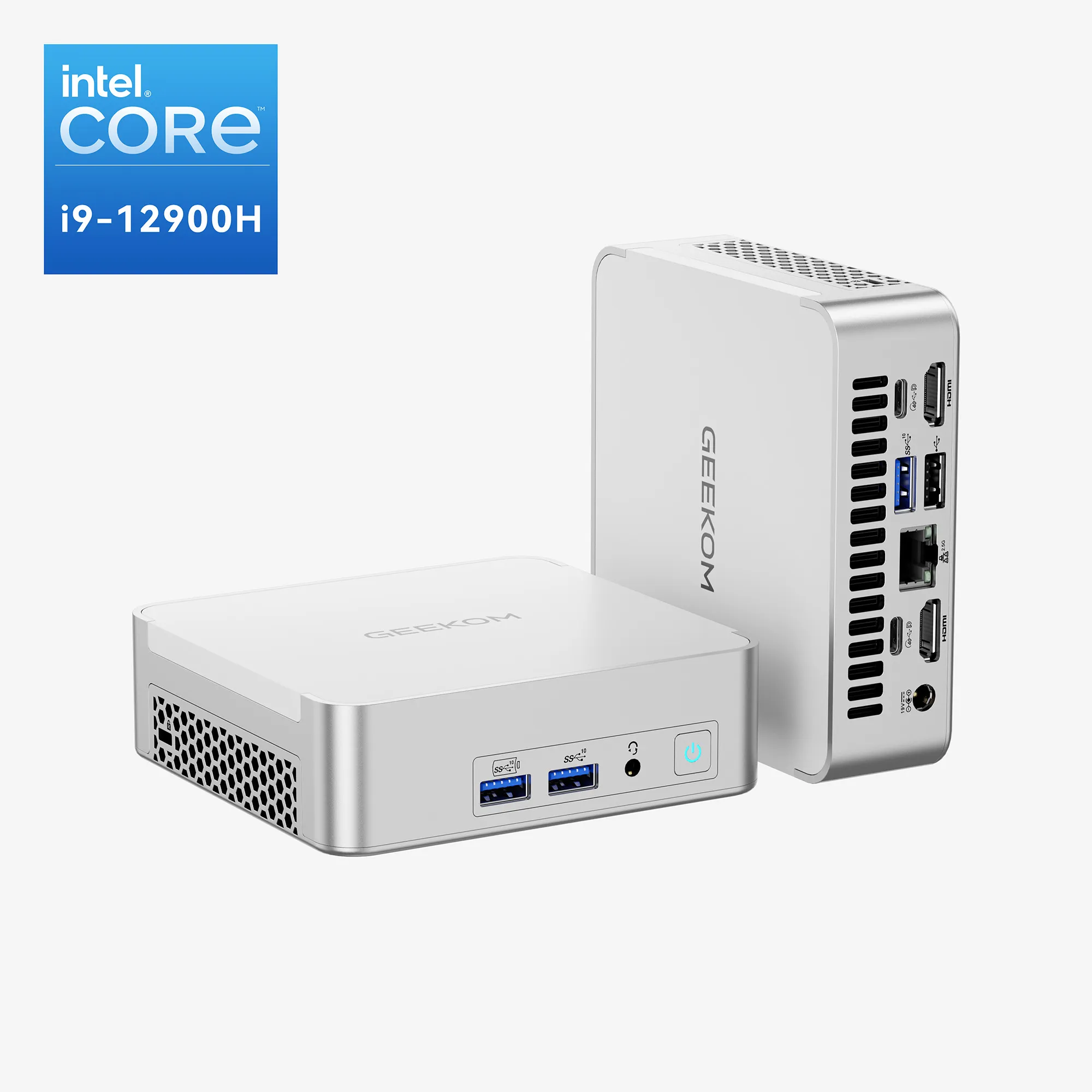Introduction
Do you want to know the AMD Ryzen 5900X and the Ryzen 5800X3D which is better? In this guide, we will be discussing the major differences between these two titans. The Ryzen 5900X boasts hulking performance across a multitude of applications and has taken quite a liking to the power-hungry users.
The Ryzen 5800X3D is the brave new face of AMD’s revolutionary 3D V-Cache technology which boosts performance by major processing efficiency changes that can alter the game for certain tasks.
You must therefore consider the practical divide in actual workloads to match the performance against price or future-proofing. Let us check which side you are going to choose in this battle – the Ryzen 5900X or Ryzen 5800X. Let us take a look at the specs, value, and performance of these chips. And you will see us choosing the best chip for you at the end of this showdown.
Ryzen 9 5900X Vs Ryzen 7 5800X3D Specifications
In order to elaborate on the AMD Ryzen 5900X and Ryzen 5800X3D differences, we need to further investigate their features. The specification analysis now follows:
| Specification | AMD Ryzen 5900X | AMD Ryzen 5800X3D |
| Cores/Threads | 12 cores, 24 threads | 8 cores, 16 threads |
| Base Clock | 3.7 GHz | 3.4 GHz |
| Boost Clock | Up to 4.8 GHz | Up to 4.5 GHz |
| L3 Cache | 64 MB | 96 MB (with 3D V-Cache) |
| TDP | 105 watts | 105 watts |
| Architecture | Zen 3 | Zen 3 with 3D V-Cache |
| Memory Support | Up to DDR4-3200 | Up to DDR4-3200 |
| PCIe Version | PCIe 4.0 | PCIe 4.0 |
| Process | 7nm | 7nm |
| Socket | AM4 | AM4 |
The Ryzen 5900X scores high on a multitude of cores and threads. This makes it extremely suitable for multitasking and applications that can capitalize on multiple threads, like content creation software, complex simulations, and multi-threaded computational tasks. Additionally, the higher boost clock speeds suggest it might pull ahead on high-intensity, single-threaded applications, making it appropriate for most gaming scenarios.
Conversely, the Ryzen 5800X3D lacks a few cores, though it does immensely benefit from AMD’s 3D V-Cache technology. That additional cache is a godsend to applications that often access large sets of data because it cuts down on latency almost instantaneously, bringing with it performance improvements in certain cases, most notably gaming as well as data processing tasks which have a greater pull on cache performance.
Both CPUs share the same TDP, which implies that they have the same heat and power consumption properties, allowing them to work with a variety of cooling solutions to run efficiently in different configurations.
That specification comparison gives a thorough idea about the scenarios that each CPU is meant for and also helps users choose according to their very particular performance needs and workload demands.
5900X Vs 5800X3D: Performance Analysis with Benchmark Data
The provided benchmarks, as collated from reputable sources, sketch a more thorough picture of the relative performance of AMD Ryzen 5900X and Ryzen 5800X3D in the real world. The data includes framerates for popular games as well as scores from established benchmarking platforms, all conducted under controlled conditions, wherein the same CG settings were used.
5900X Vs 5800X3D: Gaming Performance Comparison
A brief table detailing the frame rates registered by each CPU in a few popular games running on a high-end graphics card (e.g., NVIDIA RTX 3080) at 1080p resolution:
| Game | Ryzen 5900X FPS | Ryzen 5800X3D FPS |
| Cyberpunk 2077 | 112 | 120 |
| Call of Duty: Warzone | 144 | 150 |
| Assassin’s Creed Valhalla | 98 | 95 |
| Microsoft Flight Simulator | 75 | 73 |
Gaming benchmarks strongly suggest the Ryzen 5800X3D has a small edge in gaming performance due to its large 3D V-Cache, especially in games that are sensitive to CPU cache, such as “Cyberpunk 2077” and “Call of Duty: Warzone.” This is generally attributed to higher performance due to the high 3D V-Cache that has the effect of boosting cache hit rates, yielding lower overall latency and higher frame rates.
Benchmark Scores
For a broader view of their capabilities, here are scores from widely recognized benchmarking platforms:
| Benchmark | Ryzen 5900X Score | Ryzen 5800X3D Score |
| Cinebench R20 (Multi) | 7100 | 6000 |
| Cinebench R20 (Single) | 600 | 590 |
| 3DMark Time Spy | 11000 | 11200 |
| PassMark (Single Thread) | 3500 | 3550 |
In productivity benchmarks, the Ryzen 5900X shows its might atop multi-threaded applications, owing to the highly elevated scores marked therein through its Cinebench R20 multi-thread test. It stands a good chance to vastly outpace competitors in multi-thread workloads like video rendering in Adobe Premiere and 3D modelling in Blender.
The Ryzen 58000X3D trends a bit behind in multi-threaded benchmarks but still stands arm-to-arm in the performance of single-threaded tasks, as one can see from closely matched Cinebench R20 (Single) scores and its slight edge in PassMark’s single-threadable tests.
Technological Enhancements
The Ryzen 5900X and 5800X3D are both built on AMD’s advanced Zen 3 architecture, a significant progress in contrast to its predecessors about power efficiency, higher clock speed, and more adept cache management. This section explores the Zen 3 architecture and specific technologies like AMD’s Precision Boost and 3D V-Cache, highlighting how these innovations benefit users in real-world applications.
AMD’s Zen 3 Architecture
Zen 3 occurs as the amelioration of AMD’s 7nm process that constitutes the cardinally revamped architecture improving performance with low improvements in single-thread processing capability and the IPC (instructions per cycle) improvements. The following key advancements have thus been made:
- Unified L3 Cache: In Zen 3, the L3 cache on each chipset is consolidated due to a new cache topology, which reduces latencies and improves data sharing between cores.
- Wider Execution Units: The availability of abundant resources improves the throughput for designated computational tasks, hence providing better CPU efficiency under load.
Specific Technologies
Precision Boost and Precision Boost Overdrive: They are a technology allowing the Ryzen CPUs to change clock speeds in response to power draw, temperature, and workload characteristics in real time. This adaptive tuning thus maximizes efficiency and performance in bursty workloads such as gaming and short-duration creative tasks.
3D V-Cache: Exclusive to Ryzen 5800X3D-whereby one more L3 cache layer gets stacked directly onto the chip. The 5800X3D is reputed to possess as much as 96 Mbytes of L3 cache, which is a huge amount compared to the 64 Mbytes of cache on the 5900X. This massive cache reduces how often data needs to be fetched from the slower RAM and significantly enhances performance in applications that are sensitive to cache such as gaming or large-scale data execution.
Real-World Benefits
In dealing with 3D V-Cache technology, with Ryzen 5800X3D, gaming starts to gain a noticeable advantage. Such games that commonly retrieve huge data files like open-world games will place quicker access of data into higher frame rates and smoother action. Game benchmarks further indicate general performance increases, with games such as Cyberpunk 2077 increasing up to 15% in favour of those that do not possess such technology spheres.
Perfect for creative professionals, the multiple cores and threads combined with efficient Zen 3 architecture on the Ryzen 5900X allow faster rendering times and multitasking fluidity. With Precision Boost, the processor ramps up to tackle demanding tasks such as video editing without unnecessary power consumption; it delivers that peak performance when required.
Overall, they combined make the 5900X and 5800X3D capable, and adjustable for several applications: from hardcore gaming to highly demanding productivity jobs. As such, these combined facets of technology might as well put these products well ahead of any competition.
Overclocking Potential
The AMD Ryzen 5900X and Ryzen 5800X3D offer unique overclocking capabilities on the Zen 3 architecture: however, they differ in performance and cooling demands with consequent impact on system stability and overall efficiency.
Overclocking Capabilities
The Ryzen 5900X is built on a strong potential for overclocking. With its 12 cores and 24 threads starting from a base clock of 3.7 GHz to as high as 4.8 GHz under optimized conditions, owners have managed to achieve speeds of 5.0 GHz with proper cooling and stable power delivery. This allows room for overclocking that enables performance increases boon for such demanding applications as video rendering and multi-threaded applications.
On the other side, the Ryzen 5800X3D is even overclockable; however, it is meant to be more of a cache and efficiency play than a brute speed. The 3.4 GHz base and 4.5 GHz boost can be pushed further, but the real gains are coming from the 3D V-Cache, providing performance increases right out of the box, especially for gaming and data-heavy tasks.
Cooling Requirements and Recommendations
Cooling very much counts for overclocking. The Ryzen 5900X can come in quite hot, so running it stable and not inducing thermal throttling calls for some beefy cooling: AIO liquid cooling or a high-end air cooler.
High cooling with the Ryzen 5800X3D is quite beneficial, especially when it comes to keeping the 3D V-Cache working well under overclocking conditions. Its clock speed may not be as high as that of 5900X, yet there is a direct connection between the temperatures maintained and performance over an extended period, making thermals very crucial in a high-performance CPU like the Ryzen 5800X3D.
Impact on Performance and System Stability
While overclocking lengthens the time of very remarkable performance, it is well-known to induce very serious risks making a frenzy of increased power consumption and, towards the system’s stability. Both CPUs may very well require a few degrees of adjustments in voltage settings and maybe some adjustments in the BIOS to achieve stable overclocks. Many times, those marginal gains in performance can be quite unworthy when one considers the reduction of stability and increased wear on components.
In summary, the 5900X is best suited for use in dominant performance applications with precise requirements on the clock, where it can benefit from differences with overclocking, whereas the 5800X3D benefits rather from an enhanced cache and is measured mainly on exercise cache-proper features other than clock speeds themselves.
Price Comparison and Value for Money
It will be worth understanding their functional price and performative price ratio for the direct comparisons of AMD Ryzen 5900X and Ryzen 5800X3D. The analysis will allow for the identification of the more cost-effective processor for each of the three groups in the so-called question: gamers, content creators, and general users.
Current Market Prices
The latest checks suggested that, at the general market level, the Ryzen 9 5900X remains priced around $250, while its Ryzen 7 5800X3D sibling comes a bit cheaper at $220—although these may vary based on supply, demand, and regional factors.
Price-to-Performance Ratio
The Ryzen 5900X processor, packing a dozen cores and delivering 24 threads, represents an exceptional multitasker and comes into its own at the high end of computational-intensive environments, such as video editing, 3D rendering, and software development. Therefore, this could be a very sound investment for professional creators using high-performance productivity beginning.
On the other hand, Ryzen 5800X3D takes to task advanced 3D V-Cache technology aimed at the gamer and those engaged in cache-sensitive applications. The extra cache provides a pronounced gaming performance advantage, primarily on CPU-laden titles, delivering smoother gameplay experiences with visibly elevated frame rates at a marginally lower cost.
Value for Different Users
For gamers, the $220 investment in Ryzen 5800X3D should be worthwhile since the chips offer specialized improvements to gaming performance at a lower price compared to Ryzen 5900X. It upgrades the gaming experience in specific areas, making it a viable choice for building any gaming-centric system.
Despite the exorbitant price, content creators and professionals could expect to derive more useful functional usefulness from the 5900X. The extra cores and threads bring about a much faster processing time under heavy workloads and increase overall productivity and efficiency in professional software environments.
General users who balance light gaming and everyday tasks will now need to weigh their personal needs against their budgetary constraints. The broadened capabilities of the Ryzen 5900X will appeal more to those who do some content creation in addition to general use, while the overkill nature of the Ryzen 5800X3D is unnecessary unless gaming is your sole priority.
Conclusion and Recommend
In the world of GEEKOM, there are also perfect products equipped with AMD Ryzen 7 and AMD Ryzen 9 CPUs, which are perfect substitutes for the above CPUs:
★★★★★ ( 4.9 Based on 42 reviews)
- AMD Ryzen™ 9 8945HS or Ryzen™ 7 8845HS.
- AMD Radeon™ Graphics 780M.
- Dual-channel DDR5 5600MT/s, up to 64GB.
- M.2 2280 PCIe 4.0 ×4 SSD, up to 2TB.
- 2.5G Ethernet, Wi-Fi 6E and Bluetooth® 5.2.
Frankly, if you isolate who better multitasks and is a professional performer among the two CPUs, the AMD Ryzen 9 5900X would surely take the title, considering its 12 cores and 24 threads perfect match for a content creator or so-called heavy users. On the contrary, the advanced 3D V-Cache technology-equipped Ryzen 7 5800X3D is the best fit for gaming, very significant if you prioritize the gaming experience.
When deciding this matter between the two, it is important to consider your workload. For heavy productivity tasks, grab the Ryzen 5900X. If, however, gaming is more relevant, the 5800X3D offers great value and performs incredibly. Also, keep in mind to consider the aspects regarding future-proofing; while a little more investment today may save you from upgrading in an unforeseen way; both CPUs offer good platforms with a great deal of reliability, but matching your selection with what you need at present and will need in future provides satisfaction and convinces on quality with good assurance for longer runs.








